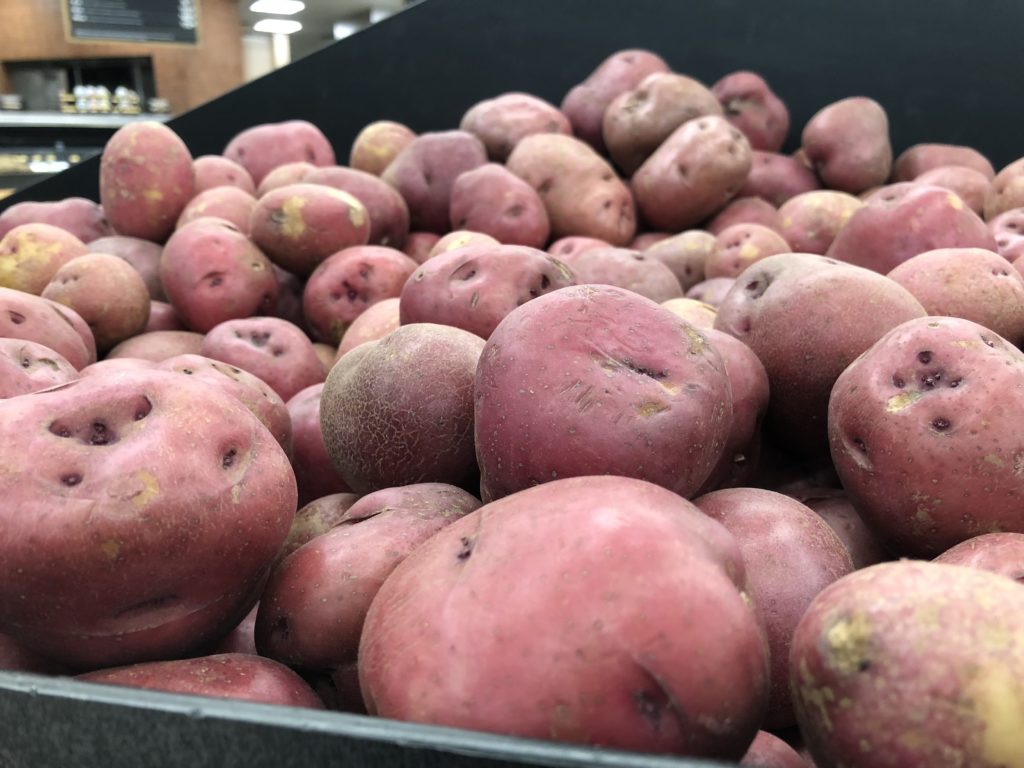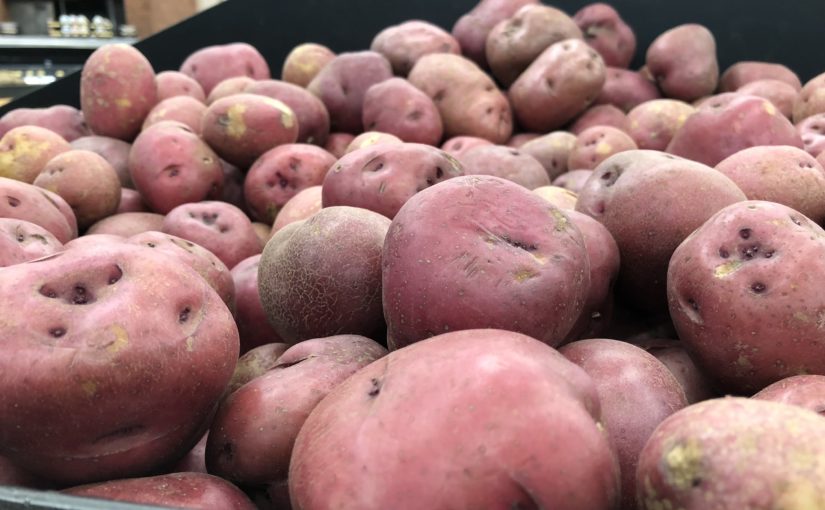
Local grocery stores have various types of potatoes for you to choose from.
Walk into any grocery store and you will find several varieties of potatoes in various shapes, sizes and colors. But what you see in the produce section is just the tip of the iceberg.
According to the International Potato Center, there are more than 4,000 varieties of potatoes. Most potatoes originate from South America, where potatoes were first grown domestically in Peru and Bolivia. Now, potatoes have spread all around the world and are the fourth most consumed crop in the world, according to the United States Department of Agriculture.
With so many different types of potatoes, how can a person know which one to use? Pinterest is always a great resource when it comes to cooking knowledge, and the article titled, “The Difference Between Every Type of Potato,” lends some insight into the dilemma. Below are some characteristics of several common types of potatoes and how you can use them in the kitchen to cook delicious main courses or side dishes.
Russet potatoes
Russet potatoes are the most basic and common type of potato. They have a thick skin and a dry inside, so they’re great for buying in bulk and using in classic holiday recipes.
Good for: Wedges, fries and baked potatoes
Red potatoes
Red potatoes have a reddish peel with a white interior. They’re usually smaller and waxier than russet potatoes. Red potatoes are great when you’re whipping up hash browns or a potato salad.
Good for: Hash browns, potato salad and roasted garlic potatoes
Fingerling potatoes
As their name suggests, fingerling potatoes are about the size and shape of a finger. What makes them different from new or baby potatoes is that fingerlings are actually fully mature, despite being small and slender.
Fingerling potatoes taste like normal-sized potatoes and can be used in many dishes.
Good for: Oven-roasted potatoes, skillet-roasted potatoes and garlic Parmesan fries
Yukon Gold
Yukon Gold potatoes are an all-purpose variety of potato. “All-purpose” means that these potatoes have medium amounts of starch, making them perfect for boiling, mashing or deep frying.
They’re neither too starchy nor waxy, so they can soak up dressing while still holding their shape if you decide to cook them.
Good for: Mashed potatoes, roasted potatoes, wedges and boiled potatoes
Purple potatoes
Purple potatoes have many of the same properties as regular, white-colored potatoes. Both the peel and the flesh of this potato are a deep violet.
The dark color signifies that purple potatoes have about four times as many antioxidants as white potatoes. Purple potatoes can also help fight high blood pressure.
Good for: Oven fries, mashed potatoes and latkes
Sweet potatoes and yams
Neither sweet potatoes nor yams are actually potatoes, and a yam is not the same thing as a sweet potato.
Although they are all root vegetables, sweet potatoes come from flowering plants called herbaceous perennial vines. They have fewer calories and carbohydrates than potatoes, but more sugar and vitamin A. Yams, on the other hand, are related to lilies and are drier than sweet potatoes.
In grocery stores, the names yam and sweet potato are used interchangeably, so if you’re concerned about buying a specific type, you’ll need to know what to look for. Sweet potatoes are long with thin, rounded ends, while yams are cylinder-shaped with a rough, hairy peel.
Good for: Casseroles, sweet potato fries and chips, muffins and soups
